Barrenwort Epimedium 'Akebono'

ABOUT
Epimedium 'Akebono', commonly known as 'Akebono' barrenwort, is a delicate and attractive perennial that is cherished for both its foliage and blossoms. The plant presents a mound-like form with a spread of heart-shaped leaves. The leaves are unique in that they undergo an enchanting color change; during spring, they emerge with a bronze-red tint, transitioning to green as they mature, and often taking on a reddish color again in the fall. Come springtime, 'Akebono' barrenwort displays a profusion of delightful flowers. These blossoms are carried on slender, wiry stems high above the foliage, creating a floating appearance. Each flower has a distinct look, consisting of outer petals that are pale pink, shaping into a cup-like form, and inner sepals that exhibit a more intense pink hue. Additionally, the inner petals feature notable white spurs that extend backward, providing a whimsical contrast and adding to its ornamental appeal. The overall aesthetic of the 'Akebono' barrenwort is one of soft texture and subtle color interplay which harmonizes beautifully in shade gardens or woodland settings. It is particularly noted for the long-lasting nature of its blossoms and its ability to flourish in dappled shade, making it a favored choice for adding understated elegance to difficult garden spots.
About this plant
 Names
NamesFamily
Berberidaceae.
Synonyms
Barrenwort, Bishop's Hat, Fairy Wings, Horny Goat Weed.
Common names
Epimedium 'Akebono'.
 Toxicity
ToxicityTo humans
The plant commonly known as Bishop's hat is not known to be toxic to humans. There is no widely recognized information that suggests Epimedium 'Akebono' contains poisonous compounds that would cause harm if ingested. However, as with any non-food plant, it is always possible for individuals to have allergic reactions or sensitivity to unfamiliar plant material. It is generally advisable not to eat parts of ornamental plants due to the lack of information on their edibility and potential effects.
To pets
The plant commonly known as Bishop's hat isn't known to be toxic to pets either. Epimedium 'Akebono', like other Epimedium species, does not appear on lists of poisonous plants for pets such as cats and dogs. However, ingestion of plant material can sometimes lead to gastrointestinal upset in pets, such as vomiting or diarrhea, simply due to the ingestion of non-digestible matter. If a pet ingests a large quantity of any plant, including this one, or shows symptoms after consuming it, it is important to consult with a veterinarian.
 Characteristics
CharacteristicsLife cycle
Perennials
Foliage type
Deciduous
Color of leaves
Green
Flower color
Pink
Height
1 foot 12-18 inches (30-45 cm)
Spread
1 foot 12-18 inches (30-45 cm)
Plant type
Herb
Hardiness zones
5
Native area
Asia
Benefits
 General Benefits
General Benefits- Attractive Foliage: Epimedium 'Akebono', commonly known as Barrenwort, has colorful leaves that provide visual interest throughout the growing season.
- Drought Tolerance: Once established, Barrenwort is quite drought-tolerant, making it suitable for drier climates or areas under water restrictions.
- Ground Cover: This plant is excellent for ground cover, as it can spread and fill in spaces, suppressing weed growth.
- Shade Tolerance: Barrenwort thrives in partial to full shade, making it a great option for underplanting in wooded gardens or shaded areas.
- Low Maintenance: Barrenwort requires minimal care, making it an easy choice for gardeners of all levels.
- Attracts Pollinators: The flowers of Barrenwort attract bees and other beneficial pollinators to the garden, helping to pollinate nearby plants.
- Deer and Rabbit Resistance: The plant is not a preferred food source for deer and rabbits, which makes it a good choice in areas where these animals are a problem for gardens.
- Seasonal Interest: With its early spring flowers and changing leaf colors, Barrenwort offers visual interest across multiple seasons.
 Medical Properties
Medical Properties- Libido Enhancement: Epimedium, commonly known as Horny Goat Weed, is traditionally used to enhance sexual function and libido.
- Osteoporosis Treatment: Some compounds in Epimedium may help in the prevention and treatment of osteoporosis by increasing bone density.
- Antioxidant Effects: Epimedium species have been observed to have antioxidant properties, which could contribute to reducing oxidative stress in the body.
- Neuroprotective Effects: It may offer neuroprotective benefits, potentially helping in the management of neurodegenerative conditions.
- Anti-inflammatory: Compounds in the plant might have anti-inflammatory effects, which could be beneficial in reducing chronic inflammation.
- Cardiovascular Health: There is some evidence to suggest that Epimedium can improve cardiovascular health by enhancing blood flow and reducing arterial stiffness.
- Menopausal Symptom Relief: The plant has been used to alleviate symptoms associated with menopause, such as hot flashes and night sweats.
 Air-purifying Qualities
Air-purifying QualitiesThis plant is not specifically known for air purifying qualities.
 Other Uses
Other Uses- Photography subject: Epimedium, commonly known as 'Akebono', features distinctive flowers, making it an excellent subject for botanical photographers seeking to capture the intricate beauty of unique plants.
- Floral arrangements: With its delicate blooms, 'Akebono' can add an exotic touch to floral arrangements, especially in spring-themed compositions.
- Bonsai accent plant: Due to its compact growth habit, 'Akebono' can be used as an accompanying plant in bonsai displays, enhancing the overall aesthetic.
- Artistic inspiration: Artists may draw inspiration from the 'Akebono' flowers and leaves, using them as models for designs in various art forms such as painting, textiles, and ceramics.
- Educational tool: Botany educators can use 'Akebono' to teach students about plant reproductive biology and pollinator attractions.
- Garden photography workshops: 'Akebono', with its distinctive appearance, can be a focus in workshops aimed at teaching garden photography techniques.
- Crafting pressed flowers: The blooms of 'Akebono' can be pressed and used for crafting bookmarks, greeting cards, and other decorative items.
- Theme gardens: 'Akebono' can be featured in Asian-themed gardens to represent Japanese flora and cultural ties to plant symbolism.
- Landscape painting subjects: The striking foliage and blooms of 'Akebono' serve as excellent subjects for landscape and nature paintings.
- Seasonal celebrations: 'Akebono' can be used in festivities that celebrate spring, such as garden parties or plant fairs, where its blooms can symbolize new beginnings and rejuvenation.
Interesting Facts
 Feng Shui
Feng ShuiThe plant Bishop's Hat is not used in Feng Shui practice.
 Zodiac Sign Compitability
Zodiac Sign CompitabilityThe plant Bishop's Hat is not used in astrology practice.
 Plant Symbolism
Plant Symbolism- Longevity: Epimedium, commonly known as barrenwort, is a perennial plant representing endurance and the ability to thrive over long periods.
- Vitality: With its vigorous growth habits, barrenwort symbolizes robust health and vitality.
- Adaptability: Barrenwort's capacity to adapt to various soil types and shades of light reflects its symbolism for flexibility and resilience.
- Sexual Health: Traditionally, Epimedium has been associated with sexual well-being and is often used in herbal remedies to enhance libido, representing fertility and sensuality.
- Protective Charm: In some cultures, barrenwort is believed to ward off evil spirits, symbolizing protection and safety.
 Water
WaterBishop's hat should be watered regularly, especially during dry spells to keep the soil consistently moist. Aim to provide the plant with about 1 inch of water weekly, which translates to roughly 0.623 gallons for a typical garden area. Increase water slightly during the peak of summer heat if leaves show signs of wilting or stress. Overhead watering is recommended in the morning to allow foliage to dry out during the day, reducing the risk of fungal diseases.
 Light
LightBishop's hat thrives best in partial shade to full shade conditions. It should not be exposed to intense midday sun, but a bit of dappled sunlight can help promote flowering. Ideally, plant it in a location under the canopy of deciduous trees, where it will receive filtered light.
 Temperature
TemperatureBishop's hat prefers temperate climates with temperatures ranging between 50°F and 80°F. The plant can tolerate temperatures down to about 5°F, but not prolonged periods of extreme cold. For optimal growth and health, maintain an environment away from severe temperature fluctuations.
 Pruning
PruningPrune Bishop's hat to remove dead or damaged foliage and to maintain plant shape. Pruning is best done in early spring before new growth starts. Cutting back the old foliage will refresh the plant and encourage full, luscious new growth. Pruning is typically needed once per year.
 Cleaning
CleaningAs needed
 Soil
SoilBishop's hat prefers well-draining soil rich in organic matter, with a pH range of 6.0 to 7.5. For best results, mix garden soil with compost and peat moss to improve fertility and aeration.
 Repotting
RepottingBishop's hat does not need frequent repotting and can thrive for several years in the same pot. It is typically repotted once every 3 to 4 years to refresh the soil.
 Humidity & Misting
Humidity & MistingBishop's hat prefers moderate humidity levels but is quite adaptable and can tolerate drier air typical of indoor environments.
 Suitable locations
Suitable locationsIndoor
Keep in filtered light, away from direct sun, and water when topsoil dries.
Outdoor
Plant in partial shade, protect from strong winds, and space 12" apart.
Hardiness zone
5-9 USDA
 Life cycle
Life cycleEpimedium 'Akebono', commonly known as Bishop's hat or fairy wings, begins its life cycle as a seed, which, once sown, germinates to produce a small seedling. As spring arrives, the seedling develops into a young plant with distinctive heart-shaped leaves and begins to establish a strong root system. Over the years, it grows into a mature clump with a semi-evergreen habit, where it displays its unique flowers that bear soft pink spurs with a yellow center during spring. After pollination, typically by bees and other insects, seeds are produced for subsequent dispersal and germination, either naturally or through cultivation by gardeners. This perennial plant then enters a period of dormancy during the colder winter months, withdrawing energy back into its rhizomes. With the return of favorable temperatures in spring, Epimedium 'Akebono' re-emerges, completing its cycle and beginning anew.
 Propogation
PropogationPropogation time
Spring to early summer
Propogation: The Epimedium 'Akebono', commonly known as Bishop's Hat or Fairy Wings, is commonly propagated through division, which is best performed in the late summer or early fall after the flowering season has concluded. To propagate by division, carefully dig up the clump of the plant, making sure to preserve as much of the root system as possible. Gently tease apart the roots and rhizomes to separate the clump into smaller sections. Each division should have at least a few leaves and a healthy portion of roots. Replant the divisions at the same soil depth as they were previously and water them thoroughly to help establish the new plants. This method encourages a quicker establishment and results in flowering plants within a shorter period of time compared to starting new plants from seed.
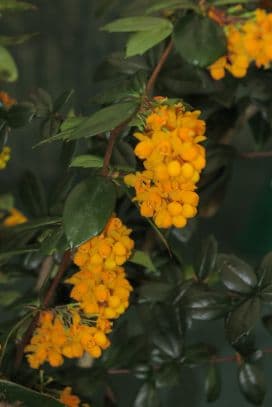
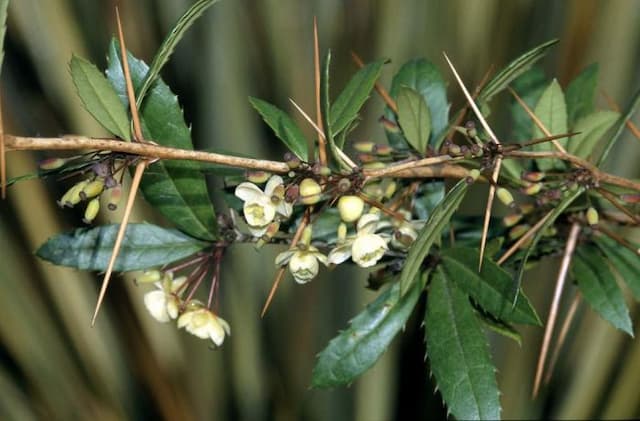
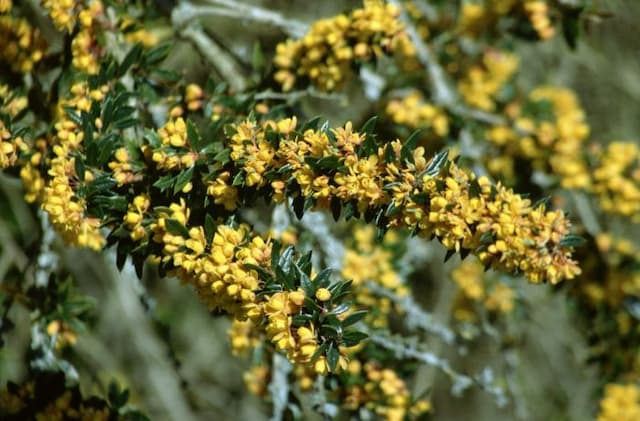
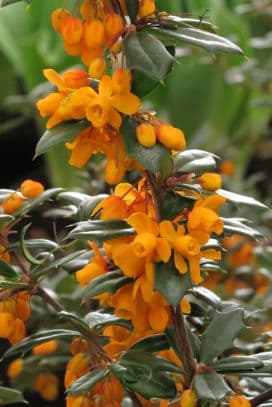
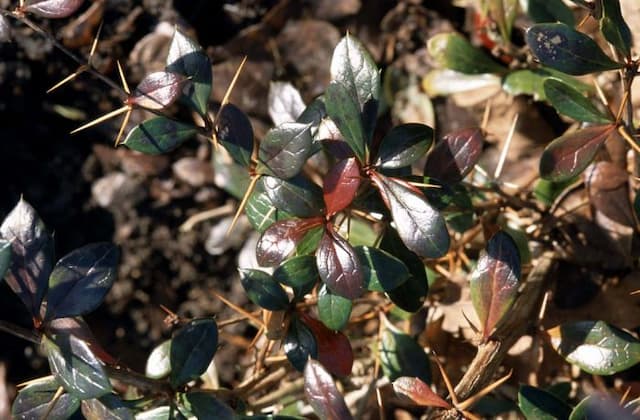



![Japanese barberry [Bonanza Gold]](/_next/image?url=https%3A%2F%2Fplants-admin.emdemapps.com%2Fimages%2Fplants%2F%2Fimages%2F604b5385e413f.png&w=640&q=75)
